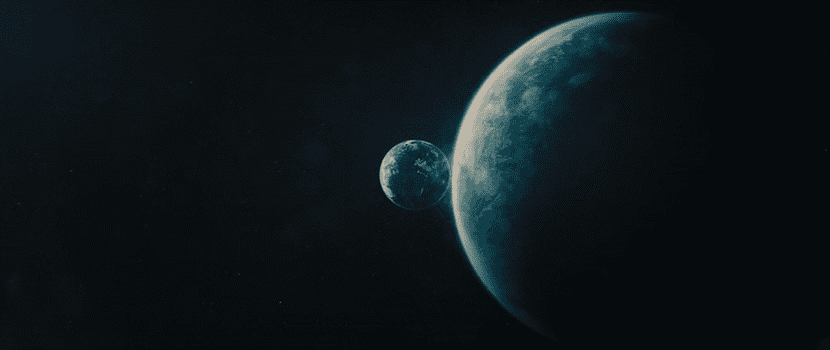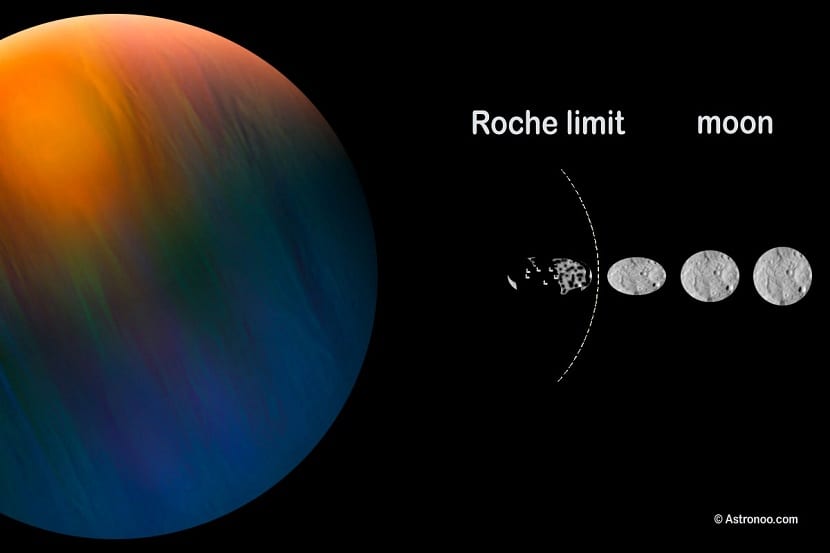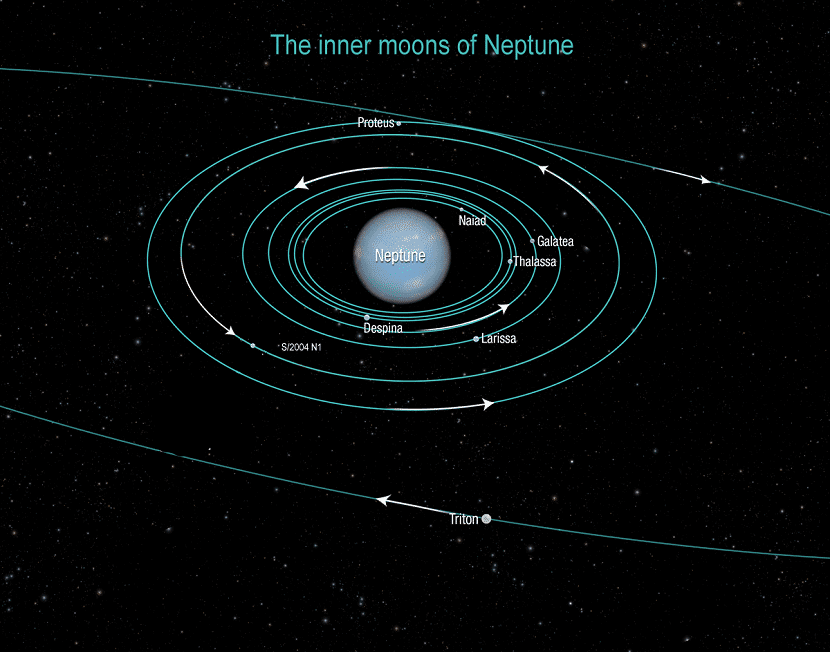
Our satellite, the Moon, is located at an average distance of 384.400 kilometers from Earth. Each year it moves away 3,4 centimeters. This means that with the passage of millions of years the moon may stop being our satellite. What would happen if the scenario was the opposite? That is, if the moon got a little closer to our planet every year. This fact is known as the Roche limit. What is this Roche limit?
In this article we explain everything about it.
If the moon came closer to our planet

First of all, it should be mentioned that this is totally fictitious. The moon has no way to get close to our planet, so this is all a guess. In fact, in reality, the moon will continue to move further and further away from Earth each year. Let's go back to the time when our planet was still newly formed and the orbit that our satellite had in was closer than the current one. At this time the distance between planet and satellite was smaller. In addition, the Earth rotated on itself in a faster way. The days were only six hours long, and the moon took only 17 days to complete its orbit.
The gravity exerted by our planet on the moon is responsible for slowing down its rotation. At the same time, the gravity exerted by the moon on our planet is what has been slowing the rotation. For this reason, today days on Earth are 24 hours long. By staying at the angular momentum of a system, it is the moon that has been moving away from us to compensate.
Conservation of angular momentum is an important thing to maintain in both directions. If the moon takes more than a day to orbit, the effect will be the same as we see here. That is, the planet's rotation slows down and the satellite moves away to compensate for it. However, if the moon rotates faster on itself it will produce the opposite effect: the planet's rotation will accelerate, the days lasting less time and the satellite will get even closer to compensate.
Effects of gravity on the Roche limit

To understand this, we need to know that the force of gravity gets more complicated if we get close enough. There is a point where all gravitational interactions coincide. This limit is known as the Roche limit. It is about the effect that an object has when it is supported by its own gravity. In this case, we are talking about the moon. If the moon gets so close to another object that gravity can end up deforming and destroying it. This Roche limit also applies to stars, asteroids, planets and satellites.
The exact distance depends on the mass, size, and density of both objects. For example, the Roche limit between the Earth and the moon is 9.500 kilometers. This is taken into account by treating the common moon from the solid one. This limit means that, If our satellite were 9500 kilometers or less away, our planet's gravity would take over its own. As a consequence, the moon would be turned into a ring of fragments of material, shattering completely. The materials would continue to rotate around the Earth until they ended up falling due to the effect of gravity on the surface. These pieces of material could be called meteorites.
If a comet were at a distance less than 18000 kilometers from the earth it would end up and shattered by the effect of gravity. The sun is capable of doing the same effect but with a much greater distance. This is due to the size of the sun compared to our planet. The larger the size of an object, the greater the force of gravity. This is not just a theory, but the destruction of satellites by their planets is something that is going to happen in the solar system. The best known example of this is that of Phobos, a satellite that is orbiting around the planet Mars and that it does so with a speed faster than the planet does on itself.
Within the Roche limit, it is the gravity of the smallest object that cannot hold its own structure together. Therefore, as the object approaches the limit of Roche headquarters more affected by the force of the planet's gravity. When it crosses this boundary several million years from now the satellite will become a ring of fragments orbiting Mars. Once all the fragments are in orbit for a time in, they will begin to precipitate on the surface of the planet.
Another example of an object that may be near the Roche limit, although not as well known, is Triton, the largest satellite on the planet. Neptuno. More or less it is estimated that in about 3600 billion years two things may happen as this satellite approaches the Roche limit: it may fall on the planet's atmosphere where it will disintegrate or it will become a set of fragments of materials similar to the ring that the planet has Saturn.
Roche's limit and humans

We may be asked the question: why does not our planet destroy us with its gravity considering that we are within the Roche limit? Although it is possible that it could be logical, it has a fairly simple answer. Gravity holds the bodies of all living things together to the surface of the planet.
This effect is hardly meaningful when compared to the chemical bonds that hold a body together as a whole. For example, this force maintained by chemical bonds in our body is much stronger than the force of gravity. In fact, gravity is one of the very weak forces within all the forces in the universe. A point where gravity acts intensely would be necessary, such as in a black hole as if to make the Roche limit able to overcome the forces that hold our bodies together.
I hope that with this information you can learn more about the Roche limit.